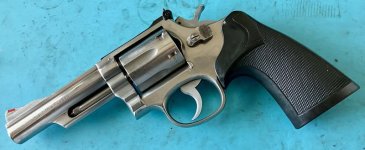I was recently watching one of the older Wilson Combat You Tube videos where Mas Ayoob was discussing his career and the duty guns he used. One Dept. he was on required to use the model 66 no dash as a duty gun. He said these guns where prone to locking-up due to heat expansion of the gas ring. And why the 66-1 moved the ring from the cylinder to the crane. And they were also prone to heating-up due to the steel they used (or something like that).
Has anyone ever experienced this?
Here's the video it comes from if anyone is interested.
https://youtu.be/yMSKDL7xOb4
Has anyone ever experienced this?
Here's the video it comes from if anyone is interested.
https://youtu.be/yMSKDL7xOb4


